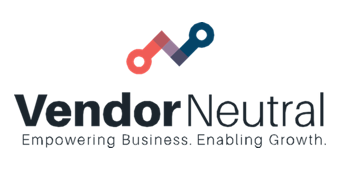Step-by-Step Strategy for Driving Digital Transformation
11 Steps for Driving Digital Transformation through Sales Technology Adoption
A Proven Digital Transformation Strategy and Framework

Are you looking to update your business strategy with digital transformation this year?
If so, here are the key drivers that organizations need to keep in mind in order to see genuine, lasting adoption and ongoing success with their digital transformation efforts. Download our free step by step resource 11 Steps for Driving Digital Transformation Through Sales Technology Adoption.
How to Improve Your Digital Transformation Strategy
- Perform a Stakeholder Audit

Before you make any organization-wide changes to processes and systems, it’s imperative to get the data you need. This means you should perform a stakeholder audit as your first step.
What Will a Stakeholder Audit Reveal?
An audit will help identify and clarify all of the following data:
- Who your relevant team members, partners, and collaborators are
- Their pain points, challenges, goals, and objectives
- Where these players are (or are not) aligned
Why Perform a Stakeholder Audit?
An audit gives you a more accurate perception of where your business is today. It helps you clearly define what’s currently working in your business, as well as where gaps and issues exist. Once you have data and clarity around your current position, you’re ready, able, and informed enough to start making decisions about business strategy moving forward.
- Align Your Stakeholders for a Competitive Advantage

Giving your organization an advantage over competitors requires the implementation of many factors, but one primary driver is the alignment of every stakeholder. Once you’ve performed the audit and know where the gaps and misalignment exist, you can confidently move forward with a plan for the future.
How to Align Stakeholders
Improve Communication
Transformation within organizations will never happen if your team members aren’t communicating. You need to harness the collective power of your people. That means creating an environment where people feel comfortable sharing ideas, and it means providing the solutions that allow for that communication to happen.
Act after You Communicate
People don’t want to talk into a vacuum; they want to be genuinely heard. True alignment will only happen when there is discernible action taken as a result of the communication. This will help every stakeholder feel invested and involved, which will help ensure continued engagement and adoption.
Work toward Shared Goals
Identify goals. This should be at the company level and the individual level. Ensure individuals can accomplish what they want to accomplish while also contributing to the overall objectives of the business.
- Eliminate Gaps between Business Processes, Stakeholders, and Digital Technologies

Successful digital transformation requires all your components to collaborate and to work together as one cohesive whole. This includes the following:
- People
- Processes
- Information (internal and external content)
- Sales strategy
- Overall business strategy
- Digital sales stack
After you’ve performed an audit, you’ll know where the gaps exist between these individual components.
Eliminating gaps in your business should be a collaborative effort. Rather than handing down decrees from upper management, the thoughts and insights of everyone should be taken into account. This gives a clearer sense of what’s going to move the needle the most and where you should be focusing your digital transformation efforts for the most impactful results.
- Successfully Going Digital Means Simplification

Every change implemented within your digital transformation strategy must be with one goal in mind: increasing productivity, effectiveness, and efficiency within your salesforce. If that’s going to happen, your strategies, tactics, and tools can’t be overly complicated.
If you add a lot of details and burden on your sales reps, they will not be incentivized to use the digital stack.
Sales reps are notoriously low on time. Always. A successful change will be the one that actually saves them time, limits how long they have to spend in any given technology, shortens the sales cycle, makes them more money, or some combination of those elements.
The simpler your adoption program, the better!
- Aim for a Seamless Customer Experience

Improving customer experience is vital to successful organizations.
Define your processes and strategies based on the needs of customers (existing and potential). This will help facilitate new sales, but it will also open up new possibilities for upselling and cross-selling into existing accounts.
Think deeply about customer behavior and customer experiences. When your sales reps speak to prospects, they must consider
- business roles
- responsibilities
- pain points
- objectives
for those individuals.
They must also be armed and prepared with the correct data, valued-based content, and messaging to ensure the information they’re providing is relevant, resonant, and effective.
With so many voices competing in the digital space today, improving customer experience in a meaningful way is key to standing out and winning business.
- Consider Long-Term Gains and Short-Term Gains with Your Digital Business Transformation

When taking your business digital, think about immediate gains and long-term benefits.
The solutions you select should provide short-term wins for two key reasons:
- One, it will give your overall strategy traction. It will show the changes are providing better, more impactful results than the status quo. This will, in turn, encourage the salesforce to adopt the change.
- Two, it will produce concrete financial results. By cutting costs, boosting revenue, or both, you’re able to enhance the bottom line. From there, you’re in a position to continue to scale and to evolve the digital efforts.
Remember, you don’t have to boil the ocean. You can start small, see results, and build on your success from there.
Your technology strategy and the functionality of each tool should be part of an overarching structured, strategic system. These components should align to your sales processes and have the ability to evolve over time in order to yield long-term results.
- Select Digital Technologies That Easily Integrate

Select digital technology with the capabilities and functionality to easily integrate. This means integrating with your processes, as well as with every relevant solution in your sales stack.
A lack of integration will cause your sales reps time, and this will hurt the willingness of your team to adopt, your return on investment, and your digital change efforts.
If you’re still operating with legacy systems, this can pose significant challenges as well. As you innovate your digital enterprises, think critically about each solution that should move forward with your business. This might mean leaving behind legacy systems your company and people have used for years. This can be difficult initially, but if those systems can’t innovate and scale with you, they’re ultimately holding you back.
Remember, all your tools need to work today and in the future. As you scale, you should be able to seamlessly plug in and integrate each technological solution without sacrificing time, usability, or functionality.
- Driving Digital Transformation Is about Being Strategic with Your Adoption Program and Insights

Strategic, Not Reactive
When it comes to digital change efforts, strategy is the most important term. Nothing should be done haphazardly or reactively.
You must have a well-defined strategy for your adoption program, every digital process you hope to add, and every change you’re looking to manifest. These efforts should be based on data, research, audits, and stakeholder input.
Upfront about Value
Sales reps aren’t going to accept change efforts just because they’re added. They must be shown the reasoned systems-level view thinking that went into these changes. This holistic perspective will help demonstrate the value, including how it will make them more efficient at selling, closing deals, and earning money.
These insights should be incorporated into training, coaching, and everboarding to ensure both existing and new sales reps understand and buy into the digital efforts and direction.
- Focus on the Value and Challenges Solved for Your Sales Reps

If you hope to have success with your technology stack, the solutions you bring into your organization must add concrete, identifiable, and compelling value to your sales reps.
Not only must every tool make your reps work more effectively, efficiently, and productively, but you must also be able to convey that information to your reps.
Within your onboarding, training, and everboarding efforts, focus heavily on the value each tool brings. Explain what they do within the sales cycle, and then show how they impact outcomes for reps. As just some examples, illustrate how the tools do the following:
- Save reps invaluable time
- Increase revenue for the company, as well as quota and compensation for the reps
- Shorten the sales cycle
- Provide quick, easy access to the information reps need throughout the sales cycle
Show how each tool solves real everyday problems and challenges for the reps, and you’re much more likely to see those reps adopting sales tech in an ongoing way.
- Create an Environment Where Your New Technology Can Scale

You never want to be in a position where you have to overhaul your entire system every time you’re looking to grow or to evolve. Rather, you want an environment that is
- agile,
- nimble, and
- scalable
with your increasing achievements over time.
A foundational software solution, such as HubSpot or another CRM, often provides multiple packages or levels. This lets you buy in at whatever tier matches your existing capabilities and needs, and then you can upgrade whenever necessary. Choose digital transformation solutions that give you this ability to increase functionality over time.
Don’t forget about the integration component as well. Every solution needs to seamlessly integrate with every other relevant tool. If they don’t, your sales reps are going to spend needless time attempting to make these technologies work together.
Once you’re costing sales reps time, you will see them adopting these digital transformation tools less and less!
- View Software and Technology Solutions with a Systems-Level Approach

What Is a Systems-Level View?
Having a systems-level view means you’re understanding your business and you’re making decisions at a more holistic level. You’re appreciating that every aspect of your company is fundamentally interconnected. Nothing operates in a vacuum.
Understanding the Systems View before Devising Your Digital Transformation Strategy
Digital transformations affect
- people
- sales strategies
- the content you’re creating
- the messaging you’re using
- your innovation goals
- your revenue goals, and
- much more
Any well-run business understands and respects this ecosystem strategy, and no digital transformation effort is made without thinking through how it will affect the various components of the whole.
Download our free step-by-step resource 11 Steps for Driving Digital Transformation Through Sales Technology Adoption to save these tips!
Have Questions about Digital Transformation?

Interested in gaining more insights about digital transformation within organizations? Want concrete digital transformation examples to implement in your own business?
Watch Our Digital Transformation Webinar
Feel free to watch our webinar, How to Create a Roadmap to Digitally Transform Your Organization through a Sales Technology Adoption Program. The panel of industry experts talks through today’s best digital transformation practices in this free, can’t-miss webinar.


